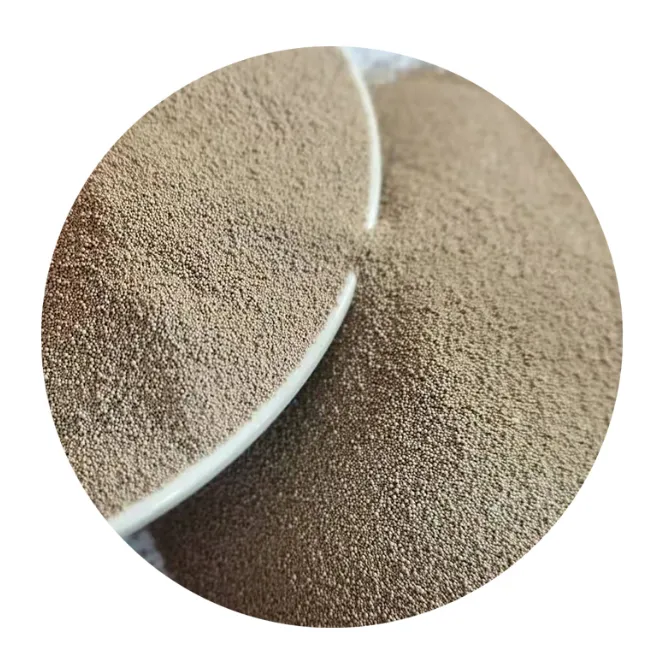Sanding 3D printed objects is a critical step in transforming raw prototypes into polished, functional, or artistic pieces. Whether working with PLA, ABS, or 3D resin prints, the choice of abrasive materials like ceramic sand or silica sand dictates the quality of the finish. Ceramic sand, composed of aluminum oxide or zirconia, offers superior hardness and heat resistance compared to traditional silica sand. This makes it ideal for sanding 3D resin prints, which often require meticulous surface smoothing due to their brittle nature. Unlike silica, ceramic abrasives generate less dust and wear down slower, ensuring consistent performance across large batches. For industrial 3D printing applications, this translates to reduced material waste and lower long-term costs. Additionally, the angular structure of ceramic sand particles allows for aggressive material removal while minimizing scratches—a key advantage when sanding a 3D print with intricate geometries.

Why Ceramic Sand Outperforms Silica in Post-Processing 3D Prints
While silica sand has been a staple in traditional manufacturing, its limitations become apparent in high-precision sanding and painting 3D prints. Silica’s rounded grains tend to glaze over during prolonged use, reducing cutting efficiency and necessitating frequent replacement. In contrast, ceramic sand retains its sharp edges, maintaining optimal abrasion throughout extended sanding 3D printed workflows. This is particularly beneficial for resin-based prints, where over-sanding can compromise structural integrity. Ceramic abrasives also operate at cooler temperatures, preventing thermal warping—a common issue when sanding a 3D print made from temperature-sensitive polymers. Furthermore, ceramic sand’s compatibility with wet sanding techniques enhances surface smoothness, a prerequisite for achieving mirror-like finishes before painting. For businesses prioritizing efficiency and finish quality, transitioning to ceramic sand is a strategic upgrade.
Optimizing Workflows: Tools and Techniques for Sanding 3D Resin Prints
Sanding 3D resin prints demands specialized tools to balance precision and material preservation. A sanding block 3D print enthusiasts often use handheld manual blocks, but industrial-scale operations benefit from electric sanders equipped with ceramic sanding belts. For complex contours, flexible sanding sponges infused with ceramic grit conform to irregular shapes without over-grinding flat surfaces. Multi-stage sanding—starting with coarse 120-grit ceramic sand and progressing to 800-grit for final polishing—ensures a defect-free base for sanding and painting 3D prints. Dust extraction systems are equally vital; ceramic sand produces finer particulates that require HEPA filtration to maintain workplace safety. Case studies show that adopting these tools reduces post-processing time by 40% compared to silica-based methods, making ceramic sand a cornerstone for scalable 3D printing ventures.
From Rough to Radiant: Mastering Sanding and Painting 3D Prints
The journey from a layered print to a gallery-ready piece hinges on meticulous sanding and painting 3D prints. After sanding a 3D print with ceramic abrasives, artists and engineers apply primer to reveal residual imperfections—a step where ceramic sand’s smooth finish minimizes rework. For metallic paints or translucent coatings, a mirror-like surface is non-negotiable; silica sand’s propensity for micro-scratches undermines this goal, whereas ceramic grit achieves uniformity. Advanced users combine ceramic sanding with chemical smoothing for hybrid finishes, though this requires compatibility testing with resin types. Notably, sanding blocks 3D print professionals rely on are now being 3D-printed themselves, customized to match specific project contours. This meta-innovation underscores the symbiotic relationship between sanding technology and 3D printing’s evolution.
FAQs: Ceramic Sand vs Silica in 3D Printing Post-Processing
Can I use regular sandpaper for sanding 3D resin prints?
While possible, standard silica sandpaper wears out quickly on resin. Ceramic sand sheets last longer and provide smoother finishes, reducing the risk of damaging delicate details.
How do I choose the right grit for sanding a 3D print?
Start with 180–220 grit ceramic sand for heavy material removal, then progress to 400–600 grit for refining. For painting, finish with 800–1000 grit to eliminate visible scratches.
Is wet sanding better for 3D printed parts?
Yes, especially with ceramic sand. Wet sanding reduces dust, prevents clogging, and enhances the smoothness of materials like PLA or resin.
Can I reuse ceramic sanding blocks?
Absolutely. Unlike silica-based blocks that degrade rapidly, ceramic sanding blocks maintain their abrasive properties through multiple uses, offering cost-effective durability.
Why does my painted 3D print still show layer lines after sanding?
This indicates insufficient grit progression. Ensure you’ve used progressively finer ceramic sands (up to 1000+ grit) and applied a filler primer before painting.
Elevate Your 3D Printing Projects Today
Unlock professional-grade finishes with our premium ceramic sand products, engineered for sanding 3D printed and resin-based creations. From industrial belts to customizable sanding blocks 3D print studios adore, our solutions streamline post-processing while elevating quality. Visit our website to explore our catalog and transform rough prints into masterpieces. Precision is just a click away—invest in the future of 3D finishing.
Next:Aerospace Casting Excellence with Ceramic Green Sand Media
